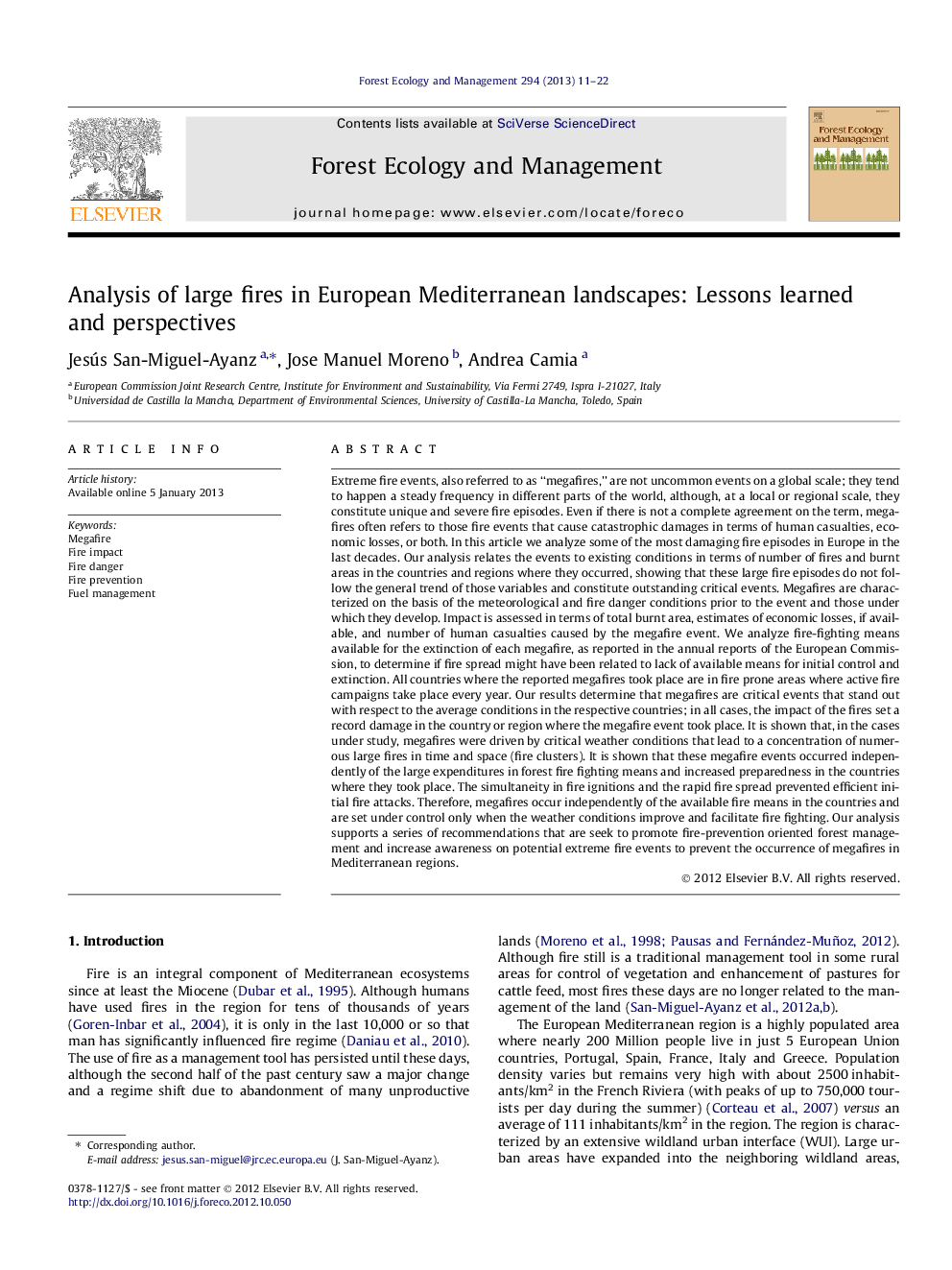| کد مقاله | کد نشریه | سال انتشار | مقاله انگلیسی | نسخه تمام متن |
|---|---|---|---|---|
| 86873 | 159219 | 2013 | 12 صفحه PDF | دانلود رایگان |

Extreme fire events, also referred to as “megafires,” are not uncommon events on a global scale; they tend to happen a steady frequency in different parts of the world, although, at a local or regional scale, they constitute unique and severe fire episodes. Even if there is not a complete agreement on the term, megafires often refers to those fire events that cause catastrophic damages in terms of human casualties, economic losses, or both. In this article we analyze some of the most damaging fire episodes in Europe in the last decades. Our analysis relates the events to existing conditions in terms of number of fires and burnt areas in the countries and regions where they occurred, showing that these large fire episodes do not follow the general trend of those variables and constitute outstanding critical events. Megafires are characterized on the basis of the meteorological and fire danger conditions prior to the event and those under which they develop. Impact is assessed in terms of total burnt area, estimates of economic losses, if available, and number of human casualties caused by the megafire event. We analyze fire-fighting means available for the extinction of each megafire, as reported in the annual reports of the European Commission, to determine if fire spread might have been related to lack of available means for initial control and extinction. All countries where the reported megafires took place are in fire prone areas where active fire campaigns take place every year. Our results determine that megafires are critical events that stand out with respect to the average conditions in the respective countries; in all cases, the impact of the fires set a record damage in the country or region where the megafire event took place. It is shown that, in the cases under study, megafires were driven by critical weather conditions that lead to a concentration of numerous large fires in time and space (fire clusters). It is shown that these megafire events occurred independently of the large expenditures in forest fire fighting means and increased preparedness in the countries where they took place. The simultaneity in fire ignitions and the rapid fire spread prevented efficient initial fire attacks. Therefore, megafires occur independently of the available fire means in the countries and are set under control only when the weather conditions improve and facilitate fire fighting. Our analysis supports a series of recommendations that are seek to promote fire-prevention oriented forest management and increase awareness on potential extreme fire events to prevent the occurrence of megafires in Mediterranean regions.
► We systematically analyzed the largest fires (megafires) in Europe in the last decade.
► We characterized megafires according to standardized observed variables.
► We compared megafires in time and space to average fires trends in the countries.
► We evaluated fire danger conditions during the events and fire impact.
► We provided recommendations to enhance prevention for these critical events.
Journal: Forest Ecology and Management - Volume 294, 15 April 2013, Pages 11–22